Pistosauroidea
Pistosauroidea is a group of marine reptiles within the superorder Sauropterygia that first appeared in the latter part of the Early Triassic and were the ancestors of plesiosaurs. Pistosauroids are rare in Triassic marine assemblages, and are represented by only a few fossils from central Europe, the United States, and China.[1] Recent phylogenetic analyses consider the Triassic pistosauroids to be a paraphyletic grouping, meaning that they do not form a true clade. Plesiosauria is now placed within Pistosauroidea, while the traditional pistosauroids are successively more basal, or primitive, sauropterygians.[2]
| Pistosauroidea Temporal range: Early Triassic-Late Cretaceous, | |
|---|---|
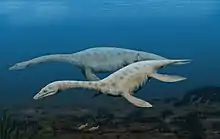 | |
| Life restoration of Augustasaurus hagdorni | |
| Scientific classification | |
| Domain: | Eukaryota |
| Kingdom: | Animalia |
| Phylum: | Chordata |
| Class: | Reptilia |
| Superorder: | †Sauropterygia |
| Clade: | †Eosauropterygia |
| Clade: | †Pistosauroidea Baur, 1887-90 |
| Subgroups | |
| |
Below is a cladogram of pistosauroid relationships from Cheng et al. (2006):[1]
| Sauropterygia |
| ||||||||||||||||||||||||||||||||||||||||||
Below is a cladogram of pistosauroid relationships from Ketchum & Benson, 2011:[3]
| Pistosauroidea |
| ||||||||||||||||||||||||||||||
References
- Cheng, Y.-N.; Sato, T.; Wu, X.-C.; Li, C. (2006). "First complete pistosauroid from the Triassic of China" (PDF). Journal of Vertebrate Paleontology. 26 (2): 501–503. doi:10.1671/0272-4634(2006)26[501:fcpftt]2.0.co;2. S2CID 85634946. Archived from the original (PDF) on 2011-09-28.
- Rieppel, O.; Sander, P.M.; Storrs, G.W. (2002). "The skull of the pistosaur Augustasaurus from the Middle Triassic of northwestern Nevada" (PDF). Journal of Vertebrate Paleontology. 22 (3): 577–592. doi:10.1671/0272-4634(2002)022[0577:tsotpa]2.0.co;2. S2CID 131693849. Archived from the original (PDF) on 2011-07-16.
- Hilary F. Ketchum; Roger B. J. Benson (2011). "A new pliosaurid (Sauropterygia, Plesiosauria) from the Oxford Clay Formation (Middle Jurassic, Callovian) of England: evidence for a gracile, longirostrine grade of Early-Middle Jurassic pliosaurids". Special Papers in Palaeontology. 86: 109–129.
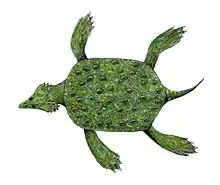
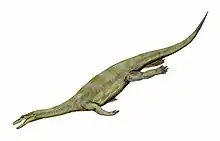


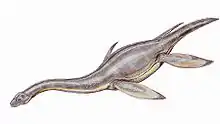
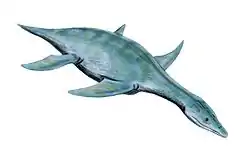
.png.webp)